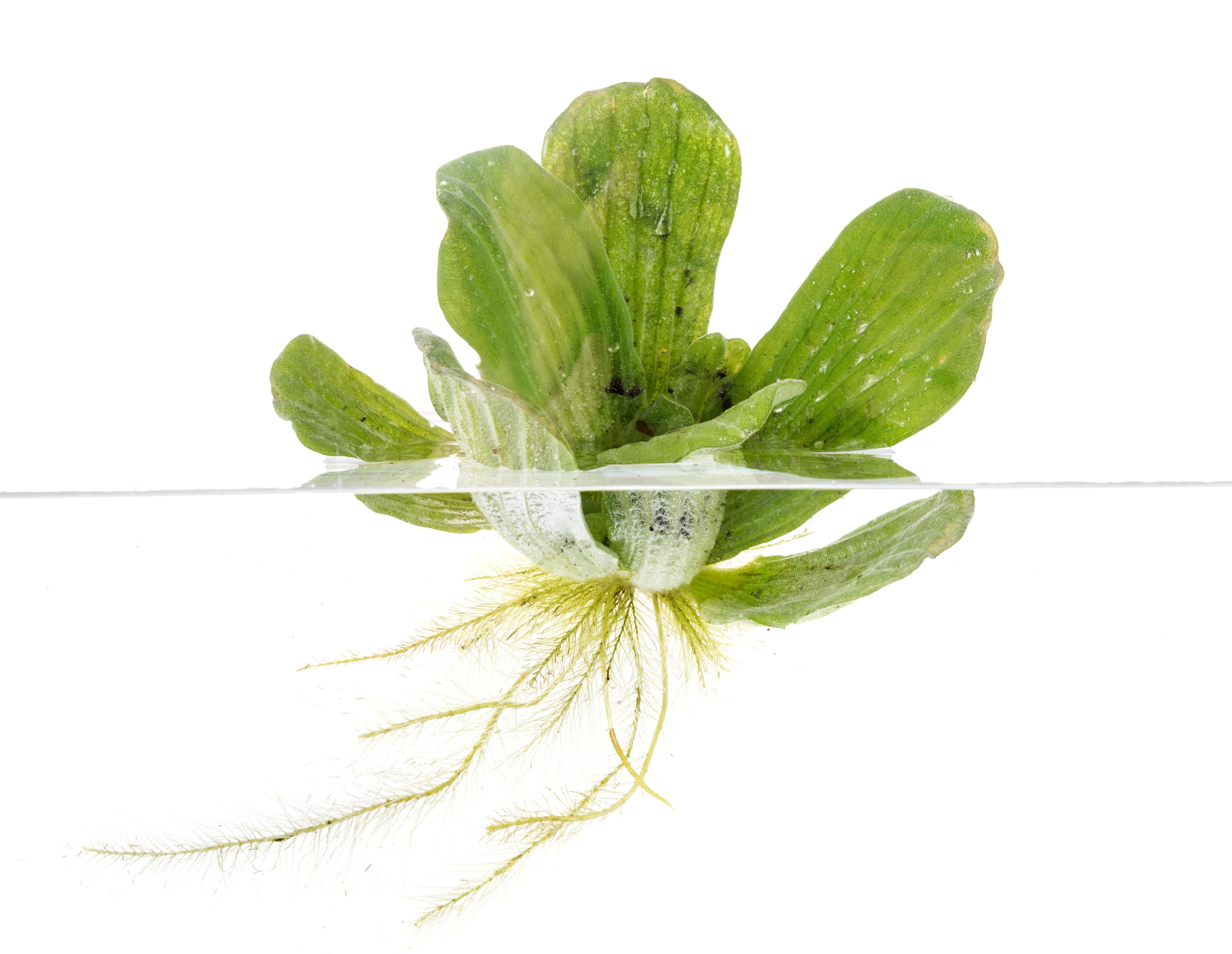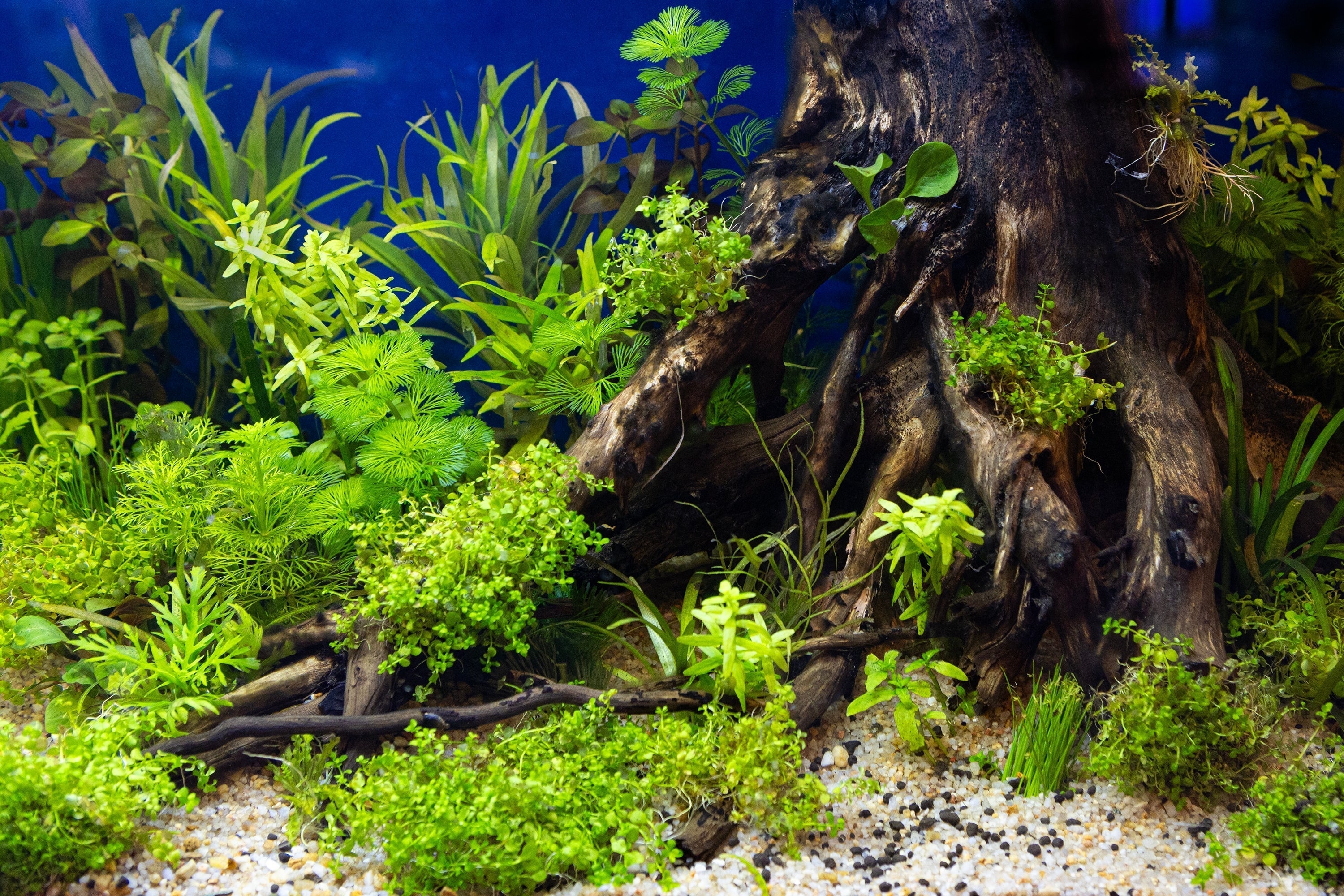Table of Contents
Transform your aquarium into a breathtaking underwater oasis with the help of floating plants. These natural beauties not only add a touch of elegance to your fish tank but also provide numerous benefits to your aquatic ecosystem. From enhancing water quality to providing shelter for your fish, floating plants bring life and color to your aquarium.
In this article, we will unveil the top 10 floating plants that will take your underwater decoration to the next level. Whether you're a beginner or an experienced aquarist, these plants are easy to care for and will thrive in a variety of tank conditions. From the striking lily pads of the Amazon Frogbit to the delicate leaves of the Water Lettuce, we'll guide you through each plant's characteristics, growth requirements, and maintenance tips.
So get ready to create a stunning aquatic paradise with our selection of the best-floating plants for your aquarium. Dive in and discover the beauty and benefits these plants offer, and get ready to enjoy a mesmerizing underwater world right in your own home.
Benefits of using floating plants in aquariums
Floating plants are a fantastic addition to any aquarium tank, offering a range of benefits that can enhance the overall health and aesthetics of your underwater ecosystem. One of the primary advantages of using floating plants is their ability to improve water quality. These plants are highly efficient at absorbing excess nutrients, such as nitrates and phosphates, which can otherwise lead to algae growth and water pollution. By removing these nutrients, floating plants help maintain a balanced aquarium environment, ensuring the well-being of your freshwater fish and other invertebrates.
In addition to water purification, aquarium floating plants also provide valuable shelter and hiding spots for your fish. Many species of fish, such as tetras, rasboras, or ricefish thrive in the dense, shaded areas created by the floating foliage. This natural cover not only offers a sense of security but also protects them from potential predators, reducing stress and promoting healthy growth. Furthermore, the root systems of floating plant can serve as a breeding ground for beneficial microorganisms, contributing to the overall biological filtration of your aquarium.
Another significant benefit of growing floating plants for aquarium is their contribution to the overall aesthetics. These freshwater plants add a touch of natural beauty, transforming your fish tank into a mesmerizing underwater garden. The vibrant colors, unique leaf shapes, and graceful movements of these tropical plants can create a captivating and visually appealing environment, making your aquarium a true centerpiece in your home or office.
Factors to consider when selecting floating plants for your aquarium
When choosing floating plants for aquariums, there are several factors to consider to ensure they thrive and complement the overall design of your underwater landscape. One of the primary considerations is the size and scale of your tank. Different floating plants have varying growth habits and can range from small, delicate species to larger, more robust varieties. It's essential to select plants that will fit comfortably within the confines of your aquarium, ensuring they don't overwhelm the space or block essential lighting and water flow.
Another crucial factor to consider is the compatibility of the floating plants with the existing inhabitants of your aquarium. Some species may be prone to being nibbled on by herbivorous fish, while others may release compounds that could be harmful to certain fish or freshwater invertebrates such as freshwater shrimp, freshwater snails, etc. It's essential to research the specific requirements and potential interactions of each floating plant before introducing them to your aquarium.
The aquarium light conditions in your tank are also an essential factor when selecting floating plants. Some species thrive in high-light environments, while others prefer lower-light conditions. Ensuring that the floating plants you choose match the lighting levels in your aquarium will help them thrive and maintain their vibrant appearance. Additionally, some floating plants may require specific water parameters, such as pH, hardness, or temperature, so it's crucial to consider these requirements and ensure they align with the existing conditions in your tank.
Top 10 floating plants for stunning underwater decoration
Amazon Frogbit:
Amazon Frogbit (Limnobium laevigatum) is a popular choice for aquarium enthusiasts due to its striking appearance and easy care requirements. This aquarium floating plant features large, round leaves that resemble miniature lily pads, creating a lush and natural look in your tank. Amazon Frogbit thrives in a wide range of water conditions and can help absorb excess nutrients, making it an excellent choice for maintaining water quality. Amazon Frogbit is currently illegal to possess or transport in some states Please review your local laws and regulations before purchasing them.
Water Lettuce:
Water Lettuce (Pistia stratiotes) is a captivating floating plant that resembles a small, rosette-shaped head of lettuce. Its velvety, lime-green leaves and cascading root systems provide excellent cover and shelter for fish. Water Lettuce is known for its efficient nutrient removal capabilities, making it a valuable addition to any aquarium ecosystem. Water lettuce is currently illegal to possess or transport in some states. Please review your local laws and regulations before purchasing them.
Duckweed:
Duckweed (Lemna minor) is a tiny, disc-shaped floating plant aquarium that can quickly spread across the surface of your aquarium, creating a dense, verdant carpet. Despite its small size, Duckweed is a powerhouse when it comes to water purification, absorbing excess nutrients and helping to maintain a balanced aquarium environment. Its fast growth rate can make it a challenge to control, but with proper management, it can be a beautiful and beneficial addition to your tank.
Water Hyacinth:
The Water Hyacinth (Eichhornia crassipes) is a stunning floating plant with vibrant, lavender-colored flowers and glossy, rounded leaves. It's known for its rapid growth and efficient nutrient absorption, making it an excellent choice for aquariums with high bioload. However, it's important to note that Water Hyacinth can be an invasive species, so it may require more diligent maintenance and pruning to prevent it from taking over your tank.
Salvinia:
Salvinia is a delicate, floating fern-like plant that adds a touch of whimsy to any aquarium. Its small, rounded leaves and intricate root systems provide a natural hiding place for small fish and fry. Salvinia Minima is relatively low-maintenance plant and can help remove excess nutrients from the water, making it a great choice for beginner and experienced aquarists alike.
Java Moss:
Java Moss (Taxiphyllum barbieri) is a versatile and hardy aquatic plant that can be left floating or attached to surfaces like driftwood and rocks. Its fine, branching structure provides excellent cover for fry and small fish, making it a favorite among aquarists. Java Moss For Sale also helps in maintaining water quality by absorbing nitrates and providing oxygenation.
Red Root Floater:
Red Root Floater (Phyllanthus fluitans) is prized for its vibrant red roots and small, round leaves that float on the water's surface. This plant adds a pop of color to aquariums and helps shade the tank, reducing algae growth. Red Root Floater is easy to care for and enhances the aesthetics of any aquatic setup.
Water Sprite:
Water Sprite (Ceratopteris thalictroides) is a fast-growing floating plant with delicate, lacy leaves that add a graceful touch to aquariums. It can thrive in low to moderate lighting and absorbs nutrients, contributing to improved water quality. Water Sprite is beneficial for providing shade and shelter for fish and can be propagated easily.
Hornwort:
Hornwort (Ceratophyllum demersum) is a popular floating plant known for its bushy, needle-like foliage that provides excellent habitat for small aquatic creatures. It's a low-maintenance plant that grows quickly and helps to oxygenate the water. Hornwort also absorbs excess nutrients, assisting in maintaining a balanced ecosystem in your aquarium.
Water Pennywort:
Water Pennywort (Hydrocotyle verticillata) is a charming floating plant with round, coin-like leaves that add a unique texture to aquariums. It grows quickly under moderate aquarium lighting and forms dense mats on the water's surface, providing shade and hiding spots for fish. Water Pennywort is beneficial for nutrient uptake and helps in keeping the aquarium environment stable.
How to properly introduce and maintain floating plants in your aquarium
When adding the floating plants to your aquarium tank, gently place them on the water's surface, taking care not to damage the delicate leaves or root systems. Avoid overcrowding the plants, as this can lead to competition for resources and potentially impact their growth. Aim to distribute the plants evenly across the surface, allowing for adequate spacing and water circulation.
Maintaining the health and vitality of your floating plants is crucial for their continued contribution to the aquarium's aesthetics and water quality. Regularly monitor the plants for any signs of distress, such as discoloration, wilting, or algae growth. Promptly remove any damaged or dying leaves or fronds to prevent them from decomposing and releasing harmful compounds into the water.
Depending on the specific species, you may need to occasionally trim or prune the floating plants to keep them from overtaking the surface or blocking essential lighting and water flow. This can be done gently with a pair of clean, sharp scissors, ensuring you don't damage the remaining healthy portions of the plants.
Consistent water changes are also essential for maintaining the optimal water parameters required by your floating plants. Aim to perform partial water changes of 25-50% on a weekly or biweekly basis, replenishing the tank with dechlorinated, temperature-matched water. This will help replenish essential nutrients and maintain the ideal water chemistry for your floating plant species.
Conclusion
Incorporating floating plants into your aquarium is an excellent way to transform your underwater world into a breathtaking and natural-looking oasis. These versatile aquatic plants not only enhance the visual appeal of your tank but also provide numerous benefits to the overall health and balance of your aquatic ecosystem. Immerse yourself in the natural beauty of a thriving underwater oasis and enjoy the mesmerizing experience of an aquarium that truly reflects the wonders of the natural world. At Splashy Fish, we further guarantee that all of our floating plants for sale are submerged grown and cover by our Live Arrival Guarantee. Visit our tropical fish store online or our aquarium virginia area to find what surprise is waiting for you.
FAQs
Can floating plants coexist with other aquarium inhabitants?
Yes, floating plants such as Salvinia (Salvinia spp.) and Java Moss (Taxiphyllum barbieri) provide beneficial shelter and cover for freshwater fish, shrimp, and other aquatic creatures. However, it's essential to choose live aquarium plants compatible with your specific fish species and monitor for any potential interactions or nutrient requirements.
What lighting conditions do floating plants require in aquariums?
Different floating plants have varying lighting needs. For instance, Red Root Floater (Phyllanthus fluitans) and Water Sprite (Ceratopteris thalictroides) thrive in moderate lighting, while Duckweed (Lemna minor) can tolerate low-light conditions. Matching the lighting requirements of your chosen plants ensures optimal growth and appearance.
How can I introduce floating plants to my aquarium without causing stress to my fish?
When adding floating plants to your planted aquarium, gently place them on the water's surface to minimize disturbance. Providing adequate spacing and ensuring good water circulation around the plants helps acclimate fish gradually to their new environment.



























